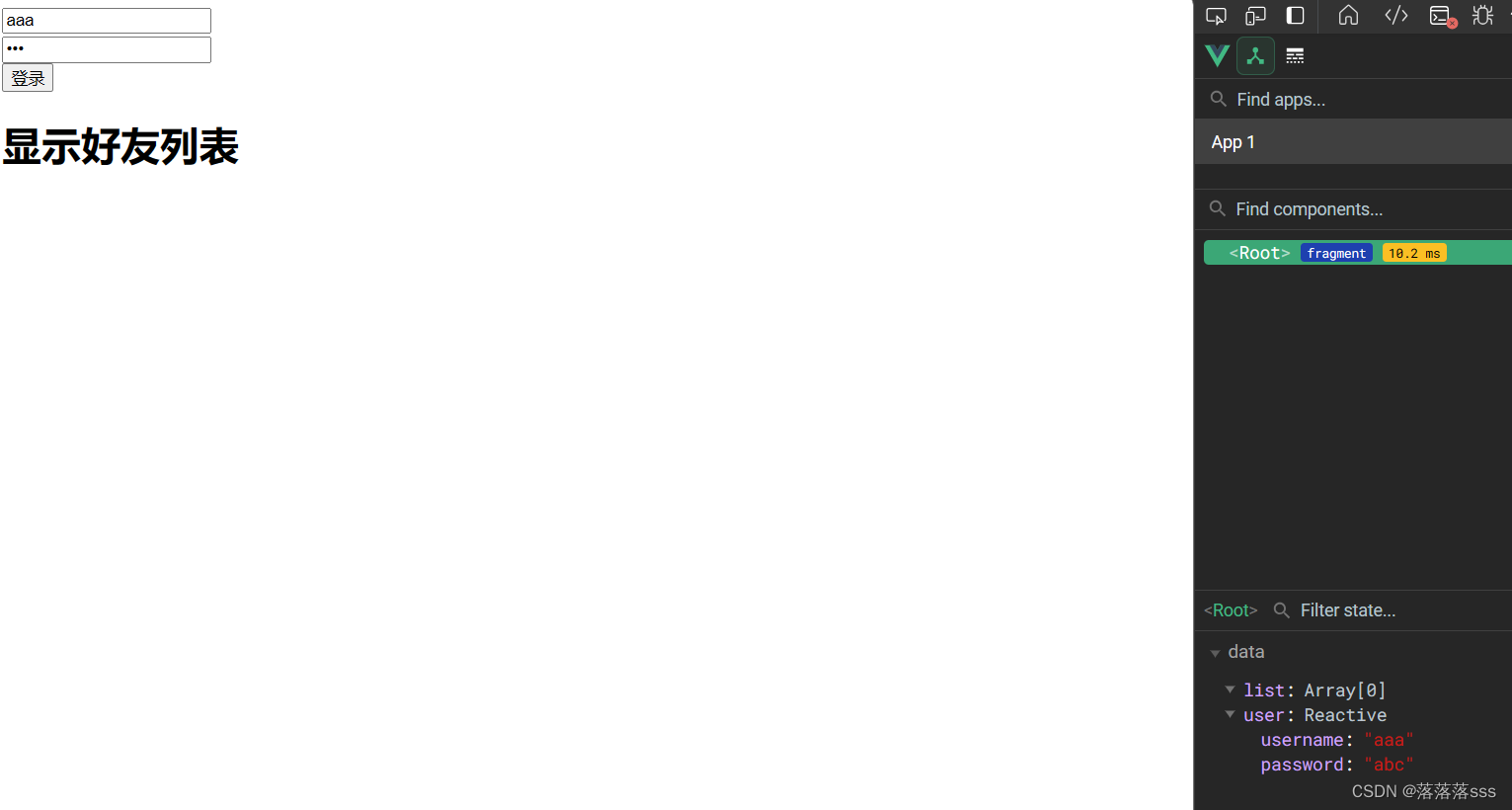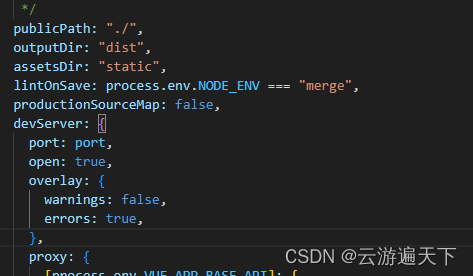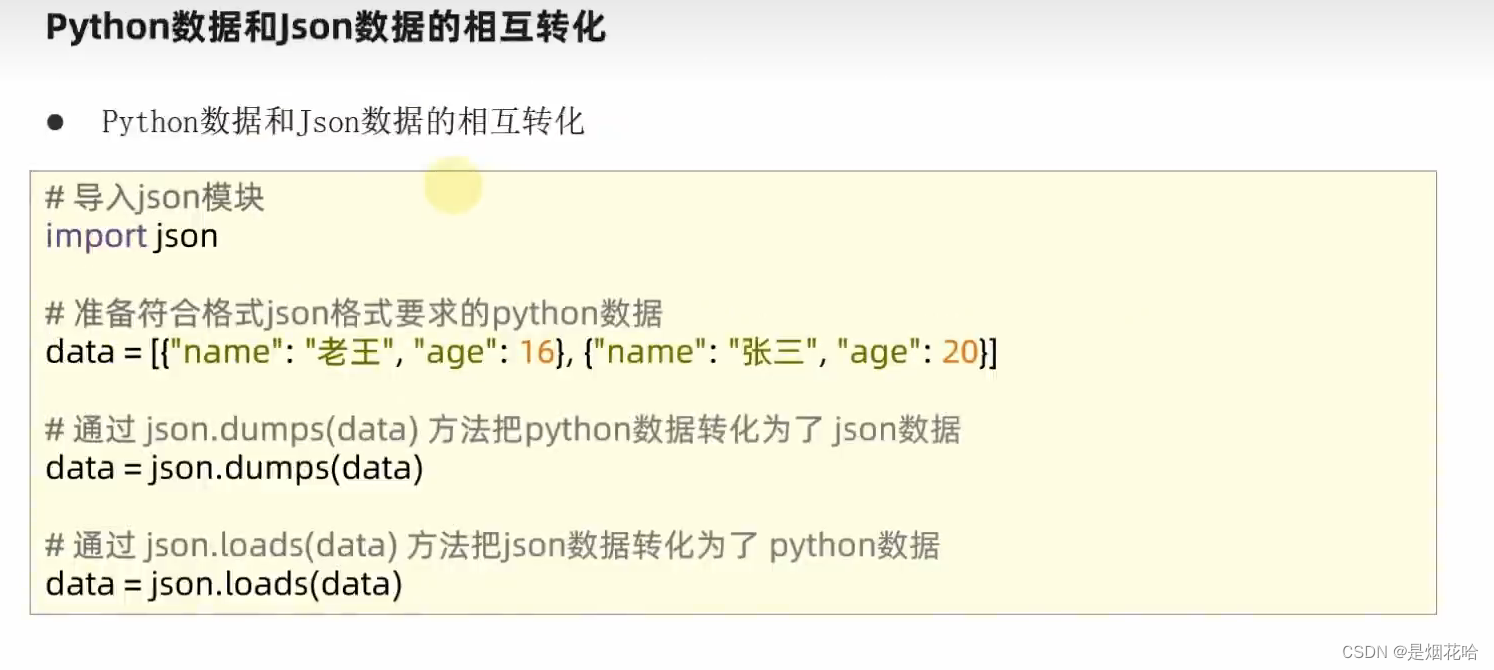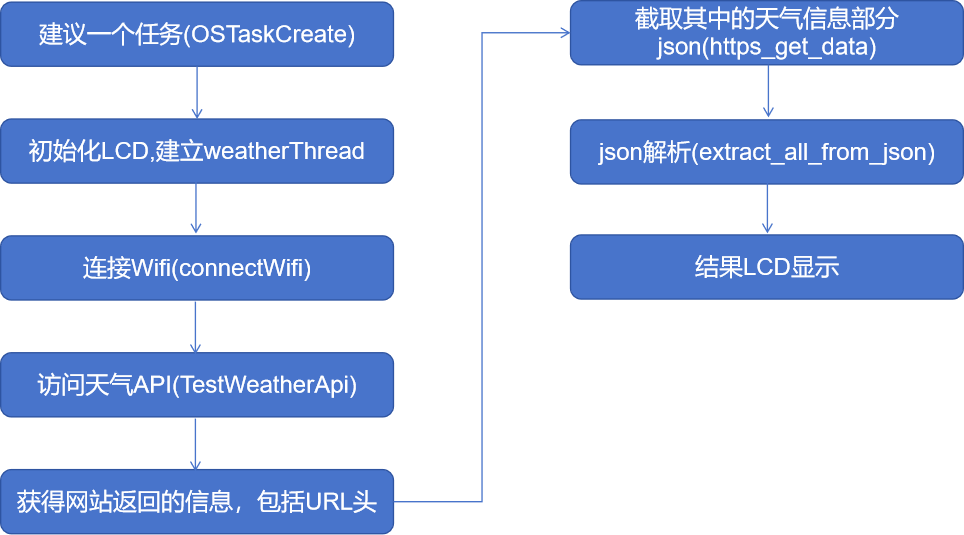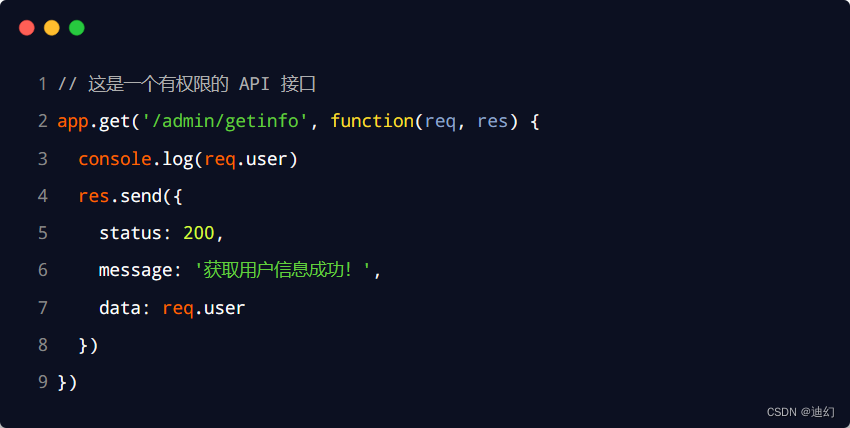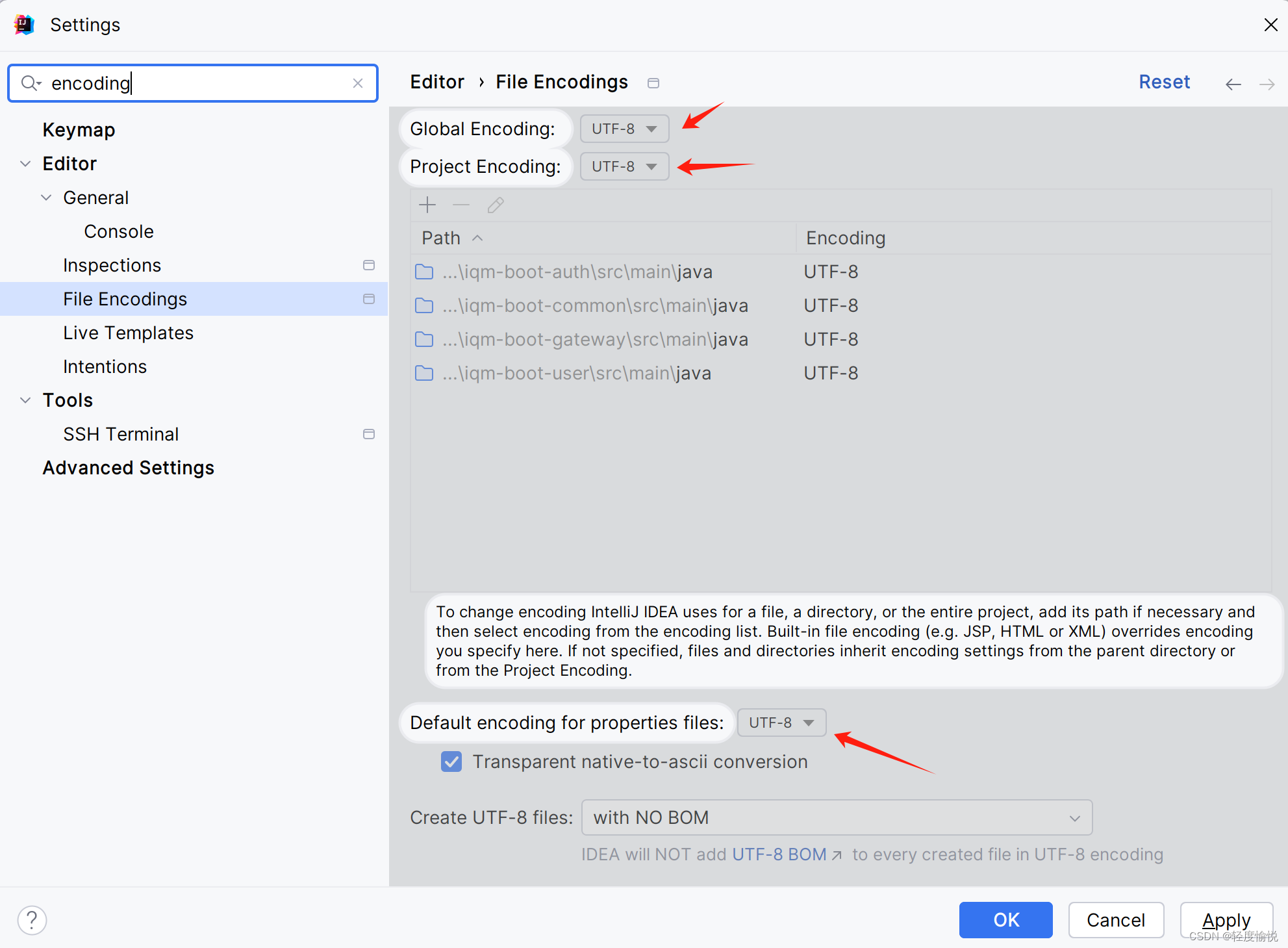之前一直没做总结,这里总结一下。
一、文件I/O
open
#include <sys/types.h>
#include <sys/stat.h>
#include <fcntl.h>
int open(const char *pathname, int flags);
例子:
int fd;
fd = open("./test_kondon", O_WRONLY | O_CREAT | O_EXCL); 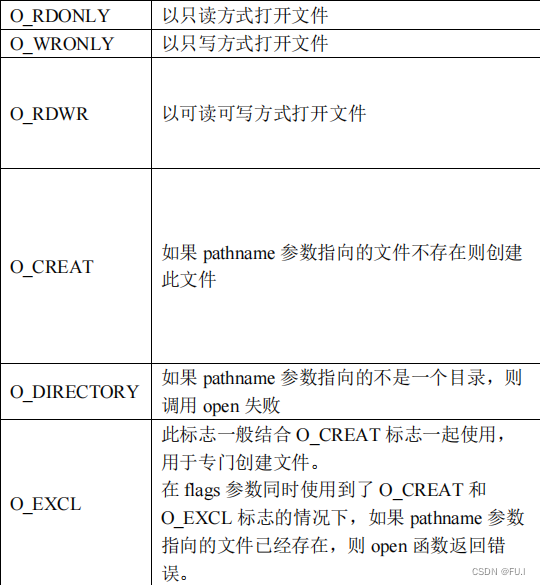
write
#include <unistd.h>
ssize_t write(int fd, const void *buf, size_t count);
例子:
int fd1, ret;
char buffer[50] = "hello world";
fd1 = open("/src_file", O_RDONLY);
if (-1 == fd1) {
printf("open src_file error");
return -1;
}
ret = write(fd1, buffer, sizeof(buffer));
if (ret == -1) {
printf("Error: write dest_file failed!\n");
goto err1;
}
ret = 0;
close(fd1);
err1:
close(fd1);read
#include <unistd.h>
ssize_t read(int fd, void *buf, size_t count);
例子:
#include <stdio.h>
#include <stdlib.h>
#include <sys/types.h>
#include <sys/stat.h>
#include <fcntl.h>
#include <unistd.h>
#include <linux/input.h>
int main(int argc, char **argv) {
int fd1, ret;
char buffer[1024];
fd1 = open("/src_file", O_RDONLY);
if (-1 == fd1) {
printf("open src_file error");
return -1;
}
ret = lseek(fd1, 500, SEEK_SET);
if (-1 == ret)
goto err1;
ret = read(fd1, buffer, sizeof(buffer));
if (-1 == ret) {
printf("Error: read src_file filed!\n");
goto err1;
}
ret = 0;
close(fd1);
err1:
close(fd1);
}close
#include <unistd.h>
int close(int fd);lseek
#include <sys/types.h>
#include <unistd.h>
off_t lseek(int fd, off_t offset, int whence);
//SEEK_SET SEEK_CUR SEEK_END
例子:
int fd1, fd2, ret;
char buffer[1024];
fd1 = open("/src_file", O_RDONLY);
if (-1 == fd1) {
printf("open src_file error");
return -1;
}
fd2 = open("/dest_file", O_WRONLY | O_CREAT | O_EXCL | S_IRWXU | S_IRGRP | S_IROTH);
if (fd2 == -1) {
printf("open dest_file error");
ret = -1;
goto err1;
}
ret = lseek(fd1, 500, SEEK_SET);
if (-1 == ret)
goto err2;
ret = read(fd1, buffer, sizeof(buffer));
if (-1 == ret) {
printf("Error: read src_file filed!\n");
goto err2;
}
ret = lseek(fd2, 0, SEEK_SET);
if (-1 == ret) {
goto err2;
}
ret = write(fd2, buffer, sizeof(buffer));
if (ret == -1) {
printf("Error: write dest_file failed!\n");
goto err2;
}
ret = 0;
close(fd1);
close(fd2);
err2:
close(fd2);
err1:
close(fd1);perror
#include <stdio.h>
void perror(const char *s);
例子:
int fd;
/* 打开文件 */
fd = open("./test_file", O_RDONLY);
if (-1 == fd) {
perror("open error");
return -1;
}
close(fd);
return 0;dup
#include <unistd.h>
int dup(int oldfd);
//复制文件描述符dup2
#include <unistd.h>
int dup2(int oldfd, int newfd);
//复制文件描述符pread & pwrite
#include <unistd.h>
ssize_t pread(int fd, void *buf, size_t count, off_t offset);
//先调用lseek再read
ssize_t pwrite(int fd, const void *buf, size_t count, off_t offset);
//先调用lseek再writefcntl
:fcntl()函数可以对一个已经打开的文件描述符执行一系列控制操作,譬如复制一个文件描述符(与 dup、dup2 作用相同)、获取/设置文件描述符标志、获取/设置文件状态标志等,类似于一个多功能文件描述符管理工具箱
//fcntl()函数可以对一个已经打开的文件描述符执行一系列控制操作,譬如复制一个文件描述符(与 dup、dup2 作用相同)、获取/设置文件描述符标志、获取/设置文件状态标志等,类似于一个多功能文件描述符管理工具箱
#include <unistd.h>
#include <fcntl.h>
int fcntl(int fd, int cmd, ... /* arg */ )
⚫ 复制文件描述符(cmd=F_DUPFD 或 cmd=F_DUPFD_CLOEXEC);
⚫ 获取/设置文件描述符标志(cmd=F_GETFD 或 cmd=F_SETFD);
⚫ 获取/设置文件状态标志(cmd=F_GETFL 或 cmd=F_SETFL);
⚫ 获取/设置异步 IO 所有权(cmd=F_GETOWN 或 cmd=F_SETOWN);
⚫ 获取/设置记录锁(cmd=F_GETLK 或 cmd=F_SETLK);ioctl
:文件 IO 操作,一般用于操作特殊文件或硬件外设,通过 ioctl 获取 LCD 相关信息等
//文件 IO 操作,一般用于操作特殊文件或硬件外设,通过 ioctl 获取 LCD 相关信息等
#include <sys/ioctl.h>
int ioctl(int fd, unsigned long request, ...);truncate & ftruncate
//将普通文件截断为指定字节长度,ftruncate()使用文件描述符 fd 来指定目标文件,truncate()则直接使用文件路径 path 来指定目标文件
//使用 ftruncate()函数进行文件截断操作之前,必须调用 open()函数打开该文件得到文件描述符,并且必
须要具有可写权限,也就是调用 open()打开文件时需要指定 O_WRONLY 或 O_RDWR。调用这两个函数并不会导致文件读写位置偏移量发生改变,所以截断之后一般需要重新设置文件当前的读写位置偏移量
#include <unistd.h>
#include <sys/types.h>
int truncate(const char *path, off_t length);
int ftruncate(int fd, off_t length);
例子:
/* 使用 ftruncate 将 file1 文件截断为长度 0 字节 */
if (0 > ftruncate(fd, 0)) {
perror("ftruncate error");
exit(-1);
}
/* 使用 truncate 将 file2 文件截断为长度 1024 字节 */
if (0 > truncate("./file2", 1024)) {
perror("truncate error");
exit(-1);
}二、标准I/O
fopen
#include <stdio.h>
FILE *fopen(const char *path, const char *mode);
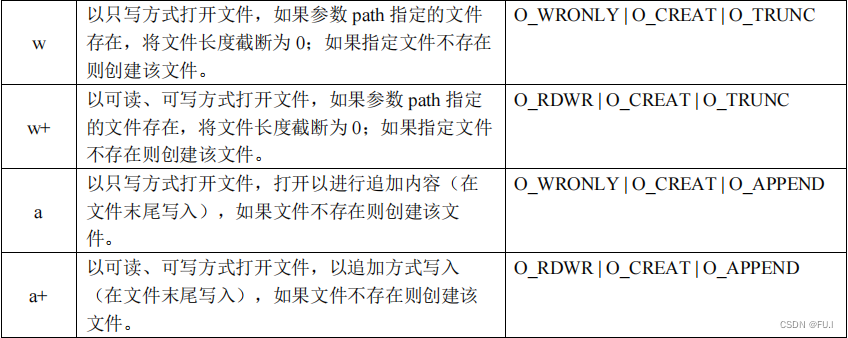
fclose
#include <stdio.h>
int fclose(FILE *stream);fread
#include <stdio.h>
size_t fread(void *ptr, size_t size, size_t nmemb, FILE *stream);
例子:
FILE *fp = NULL;
char buf[50] = {0};
int size = 0;
int ret = 0;
if (NULL == (fp = fopen("./test_file1", "r"))) {
perror("test_file1 open failed");
exit(-1);
}
ret = fseek(fp, 0, SEEK_END);
if (ret < 0) {
perror("test_file1 seek failed");
fclose(fp);
exit(-1);
}
long fileSize = ftell(fp);
printf("文件大小:%ld\r\n", fileSize);
printf("文件打开成功\r\n");
ret = fseek(fp, 0, SEEK_SET);
if (ret < 0) {
perror("test_file1 seek failed");
fclose(fp);
exit(-1);
}
if (0 > (size = fread(buf, 1, fileSize, fp))) {
printf("文件读取失败\r\n");
fclose(fp);
exit(-1);
}
printf("读取到 %d 个数据:%s\r\n", size, buf);
fclose(fp);
exit(0);
fwrite
#include <stdio.h>
size_t fwrite(const void *ptr, size_t size, size_t nmemb, FILE *stream);
例子:
char buf[] = "Hello World\n";
FILE *fp = NULL;
if (NULL == (fp = fopen("./test_file1", "w"))) {
perror("Couldn't open");
exit(-1);
}
printf("文件打开成功");
if (sizeof(buf) > fwrite(buf, 1, sizeof(buf), fp)) {
printf("Couldn't write");
fclose(fp);
exit(-1);
}
printf("写入数据成功\n");
fclose(fp);
exit(0);fseek
#include <stdio.h>
int fseek(FILE *stream, long offset, int whence);
例子:
//fseek(file, 0, SEEK_SET);
//fseek(file, 0, SEEK_END);
//fseek(file, 100, SEEK_SET);
FILE *fp = NULL;
int ret = 0;
char read_buf[100] = {0};
char write_buf[] = "www.example.com\r\n";
if (NULL == (fp = fopen("./test_file", "w+"))) {
perror("Couldn't open");
exit(-1);
}
printf("文件打开成功\r\n");
if (sizeof(write_buf) > fwrite(write_buf, 1, sizeof(write_buf), fp)) {
printf("Couldn't write");
fclose(fp);
exit(-1);
}
printf("文件写入成功\r\n");
if (0 > fseek(fp, 0, SEEK_SET)) {
perror("FSEEK could");
fclose(fp);
exit(-1);
}
printf("文件定位头成功\r\n");
if (sizeof(write_buf) > (ret = fread(read_buf, 1, sizeof(read_buf), fp))) {
printf("Couldn't read");
fclose(fp);
exit(-1);
}
printf("读取到 %d 个字符:%s\r\n", ret, read_buf);
fclose(fp);
exit(0);
ftell
#include <stdio.h>
long ftell(FILE *stream);
例子:
/* 获取当前位置偏移量 */
if (0 > (ret = ftell(fp))) {
perror("ftell error");
fclose(fp);
exit(-1);
}feof
:测试参数 stream 所指文件的 end-of-file 标志,如果 end-of-file 标志被设置了,则调用feof()函数将返回一个非零值,如果 end-of-file 标志没有被设置,则返回 0。
//当文件的读写位置移动到了文件末尾时,end-of-file 标志将会被设置
#include <stdio.h>
int feof(FILE *stream);
例子:
FILE *fp = NULL;
int ret = 0;
char read_buf[100] = {0};
char write_buf[] = "www.example.com\r\n";
if (NULL == (fp = fopen("./test_file", "w+"))) {
perror("Couldn't open");
exit(-1);
}
printf("文件打开成功\r\n");
if (sizeof(write_buf) > fwrite(write_buf, 1, sizeof(write_buf), fp)) {
printf("Couldn't write");
fclose(fp);
exit(-1);
}
printf("文件写入成功\r\n");
if (0 > fseek(fp, 0, SEEK_SET)) {
perror("FSEEK could");
fclose(fp);
exit(-1);
}
printf("文件定位头成功\r\n");
while (1) {
if (sizeof(write_buf) > (ret = fread(read_buf, 1, sizeof(read_buf), fp))) {
printf("Couldn't read\r\n");
fclose(fp);
exit(-1);
}
if (feof(fp)) {
printf("到达文件末尾\r\n");
break;
}
}
printf("读取到 %d 个字符:%s\r\n", ret, read_buf);
fclose(fp);
exit(0);ferror
:测试参数 stream 所指文件的错误标志,如果错误标志被设置了,则调用 ferror()函数将返回一个非零值,如果错误标志没有被设置,则返回 0。
#include <stdio.h>
int ferror(FILE *stream);
例子:
FILE *fp = NULL;
int ret = 0;
char read_buf[100] = {0};
char write_buf[] = "www.example.com\r\n";
if (NULL == (fp = fopen("./test_file", "w+"))) {
perror("Couldn't open");
exit(-1);
}
printf("文件打开成功\r\n");
if (sizeof(write_buf) > fwrite(write_buf, 1, sizeof(write_buf), fp)) {
printf("Couldn't write");
fclose(fp);
exit(-1);
}
printf("文件写入成功\r\n");
if (0 > fseek(fp, 0, SEEK_END)) {
perror("FSEEK could");
fclose(fp);
exit(-1);
}
printf("文件定位头成功\r\n");
while (1) {
if (sizeof(write_buf) > (ret = fread(read_buf, 1, sizeof(read_buf), fp))) {
if (ferror(fp)) {
printf("Couldn't read");
fclose(fp);
exit(-1);
}
}
if (feof(fp)) {
printf("到达文件末尾\r\n");
break;
}
}
printf("读取到 %d 个字符:%s\r\n", ret, read_buf);
fclose(fp);
exit(0);clearerr
:清除 end-of-file 标志和错误标志,当调用 feof()或 ferror()校验这些标志后,通常需要清除这些标志,避免下次校验时使用到的是上一次设置的值,此时可以手动调用 clearerr()函数清除标志。
#include <stdio.h>
void clearerr(FILE *stream);
例子:
FILE *fp = NULL;
int ret = 0;
char read_buf[100] = {0};
char write_buf[] = "www.example.com\r\n";
if (NULL == (fp = fopen("./test_file", "w+"))) {
perror("Couldn't open");
exit(-1);
}
printf("文件打开成功\r\n");
if (sizeof(write_buf) > fwrite(write_buf, 1, sizeof(write_buf), fp)) {
printf("Couldn't write");
fclose(fp);
exit(-1);
}
printf("文件写入成功\r\n");
if (0 > fseek(fp, 0, SEEK_SET)) {
perror("FSEEK could");
fclose(fp);
exit(-1);
}
printf("文件定位头成功\r\n");
while (1) {
if (sizeof(write_buf) > (ret = fread(read_buf, 1, sizeof(read_buf), fp))) {
printf("Couldn't read\r\n");
fclose(fp);
exit(-1);
}
if (feof(fp)) {
printf("到达文件末尾1\r\n");
clearerr(fp); //清除标志,后面的输入输出操作继续进行
if (feof(fp)) {
printf("到达文件末尾2\r\n");
}
break;
}
}
printf("读取到 %d 个字符:%s\r\n", ret, read_buf);
fclose(fp);
exit(0);格式化I/O:格式化输出
#include <stdio.h>
int printf(const char *format, ...);
int fprintf(FILE *stream, const char *format, ...);
int dprintf(int fd, const char *format, ...);
int sprintf(char *buf, const char *format, ...);
int snprintf(char *buf, size_t size, const char *format, ...);
printf("Hello World!\n");
//格式化数据写入到由 FILE 指针指定的文件中
fprintf(stderr, "Hello World!\n");
//格式化数据写入到由文件描述符 fd 指定的文件中
dprintf(STDERR_FILENO, "Hello World!\n");
//格式化数据存储在由参数 buf 所指定的缓冲区中
char buf[100];
sprintf(buf, "Hello World!\n");
char buf[20] = {0};
sprintf(buf, "%d", 100);格式控制字符串 format
printf("转换说明 1 转换说明 2 转换说明 3", arg1, arg2, arg3);
转换说明:%[flags][width][.precision][length]type
%(必选)
flags:标志,可包含 0 个或多个标志;
width:输出最小宽度,表示转换后输出字符串的最小宽度;
precision:精度,前面有一个点号" . ";
length:长度修饰符;
type:转换类型,指定待转换数据的类型。(必选)
例子:
int a = 0, b = 0, c = 0;
char buf[50] = {0};
printf("%d (%s) %d (%s)\n", 520, "Tux", 1314, "xuT");
fprintf(stdout, "%d (%s) %d (%s)\n", 520, "Tux", 1314, "xuT");
dprintf(STDOUT_FILENO, "%d (%s) %d (%s)\n", 520, "Tux", 1314, "xuT");
sprintf(buf, "%d (%s) %d (%s)\n", 520, "Tux", 1314, "xuT");
printf("%s", buf);
memset(buf, 0x00, sizeof(buf));
snprintf(buf, sizeof(buf), "%d (%s) %d (%s)\n", 520, "Tux", 1314, "xuT");
printf("%s", buf);
exit(0);格式化I/O:格式化输入
#include <stdio.h>
//scanf()函数可将用户输入(标准输入)的数据进行格式化转换
int scanf(const char *format, ...);
//fscanf()函数从 FILE 指针指定文件中读
取数据,并将数据进行格式化转换
int fscanf(FILE *stream, const char *format, ...);
//sscanf()函数从参数 str 所指向的字符串中读取数据,并将数据进行格式
化转换。
int sscanf(const char *str, const char *format, ...);
例子:
int a, b, c;
scanf("%d %d %d", &a, &b, &c);
int a, b, c;
fscanf(stdin, "%d %d %d", &a, &b, &c);
char *str = "5454 hello";
char buf[10];
int a;
sscanf(str, "%d %s", &a, buf);fsync
:fsync()函数,对目标文件的数据进行了同步操作,将参数 fd 所指文件的内容数据和元数据写入磁盘,只有在对磁盘设备的写入操作完成之后,fsync()函数才会返回。
#include <unistd.h>
int fsync(int fd);fdatasync
#include <unistd.h>
int fdatasync(int fd);sync
:将所有文件 I/O 内核缓冲区中的文件内容数据和元数据全部更新到磁盘设备中,该函数没有参数、也无返回值,意味着它不是对某一个指定的文件进行数据更新,而是刷新所有文件 I/O 内核缓 冲区。
#include <unistd.h>
void sync(void);内核缓冲标志
O_DSYNC:在调用 open()函数时,指定 O_DSYNC 标志,其效果类似于在每个 write()调用之后调用 fdatasync()函数进行数据同步。譬如:
fd = open(filepath, O_WRONLY | O_DSYNC);
O_SYNC:在调用 open()函数时,指定 O_SYNC 标志,使得每个 write()调用都会自动将文件内容数据和元数据刷新到磁盘设备中,其效果类似于在每个 write()调用之后调用 fsync()函数进行数据同步,譬如:
fd = open(filepath, O_WRONLY | O_SYNC);fileno
:将标准 I/O 中使用的 FILE 指针转换为文件 I/O 中所使用的文件描述符
#include <stdio.h>
int fileno(FILE *stream);fdopen
#include <stdio.h>
FILE *fdopen(int fd, const char *mode);
